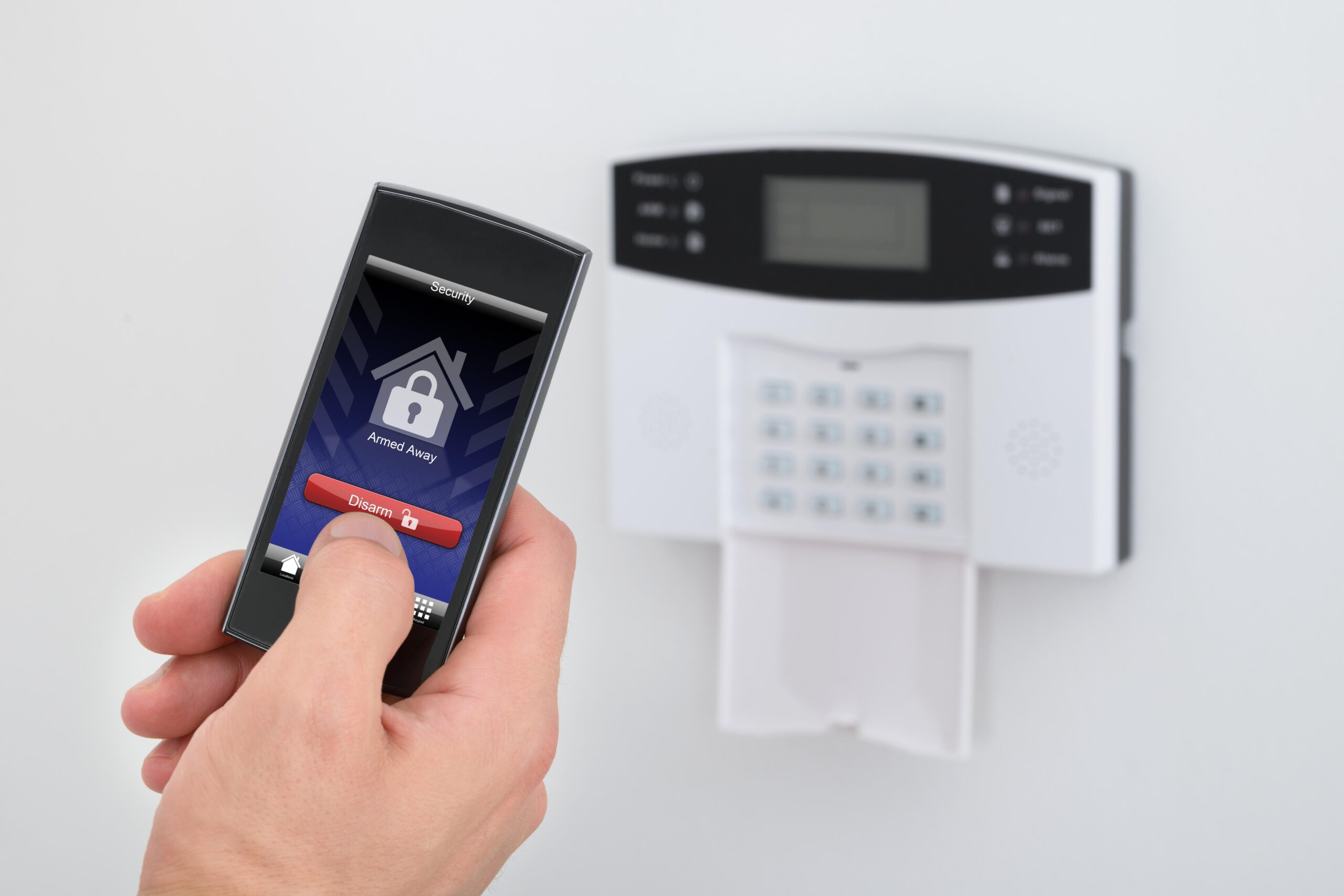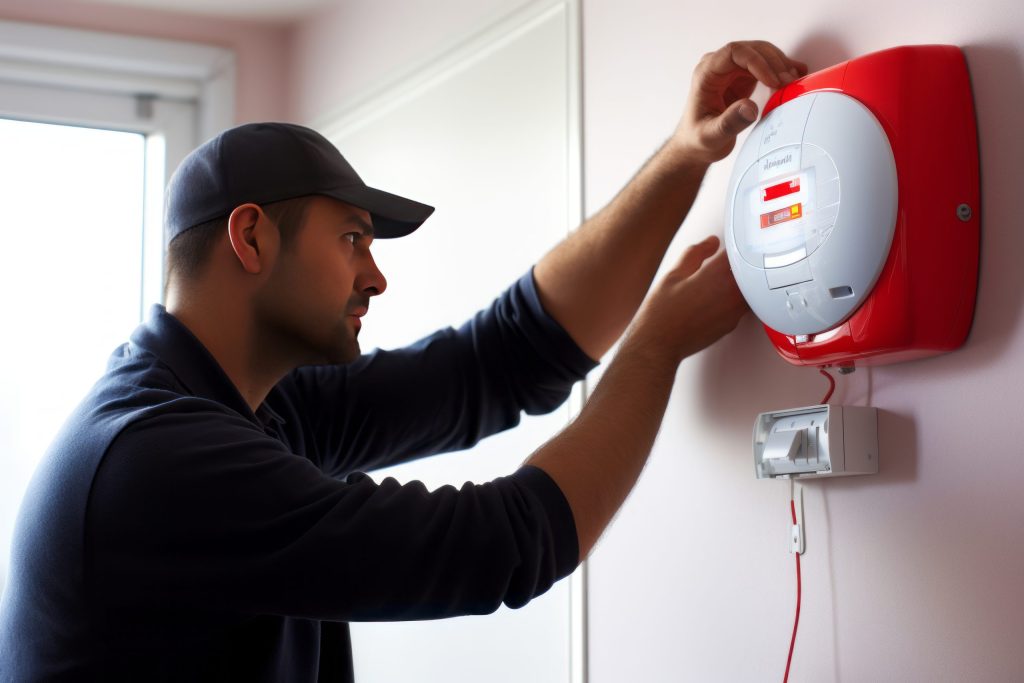How to Use Home Alarm System for Peace of Mind

Homes without security systems are 300% more likely to be targeted by burglars [1]. Using a home alarm system isn’t just about feeling at ease – it’s about actively safeguarding your home and loved ones. Whether you’re new to home security or want to better understand your system, this guide will walk you through everything you need to know to keep your space secure.
The decision to protect your home is an important one. Keep reading to discover how to use home alarm system and how they can give you that extra layer of safety and assurance.
Key Takeaway
- Knowing how to properly arm and disarm your home security system is essential for optimal protection.
- Regularly testing your system ensures it remains in top working condition.
- Various monitoring options provide an extra layer of reassurance.
Key Components of Home Alarm Systems
Let’s break down the essential parts of a home alarm system. Think of these components as a team, each with an important job in keeping your home safe.
The control panel is the “brain” – the command center where you manage everything. It shows what’s happening and lets you control your entire security setup with just a few taps.
The sensors, like window, door, and motion detectors, alert the system if someone tries to enter without permission. When a door or window opens, the sensors send a signal to the control panel, which can then trigger the alarm.
The alarm siren makes loud noises to scare off intruders if a break-in happens. A good siren reaches at least 85 decibels, loud enough for neighbors to hear. This noise can stop burglars and alert people nearby to a potential threat.
Some systems offer 24/7 monitoring services. They watch over your home and can call for help if the alarm goes off, adding an extra layer of safety.
Understanding these parts helps users know what to check if something goes wrong. Each one plays a crucial role in making sure the alarm system works well and keeps the home secure.
Setting Up Your Home Alarm System
Getting your home alarm system set up the right way is essential for it to work well. Proper setup creates a strong defense against potential threats.
Some systems are easy enough for homeowners to install themselves, while others may need a professional. Users should make sure all sensors cover entry points like doors and windows. This way, any unauthorized entry will be detected.
Learning how to arm the system using a control panel, mobile app, or key fob is important [2]. Setting reminders to arm the system when leaving and disarm it upon returning is crucial. This routine helps ensure the system is always ready to protect the home.
Regular testing of the sensors and alarms is necessary to confirm everything works. Most systems have a test mode that allows users to check the system without triggering alarms. This testing can be done monthly to ensure reliability.
These steps help users feel confident their system is ready to protect their home. An effective setup can prevent issues, making sure the system functions as intended.
Monitoring Options
There are two main ways to monitor a home alarm system, and users can choose what works best for them. Each option has its benefits and can be tailored to different needs.
With self-monitoring, users receive alerts on their phones. They can keep a close eye on their homes directly. This is great for people who want immediate notifications and prefer to handle alerts on their own. Users can check the status of their system anytime, making it really convenient.
Professional monitoring is when a center gets alerted if an alarm goes off. The center can call emergency services if needed, providing extra peace of mind. Many people prefer this option because it adds an extra layer of security. Knowing someone is watching over the home 24/7 can be very comforting.
Choosing between these options depends on how much control users want over their home security. Both methods have their advantages, and users can select what fits their lifestyle best.
Maintenance Tips

Keeping a home alarm system in good working order requires regular maintenance. Following a few simple tips can ensure the system stays reliable.
It’s important to keep the system’s software up-to-date. This helps protect against any vulnerabilities that could compromise safety. Keeping the software current ensures the system can function at its best.
Users should also check the backup batteries to make sure they are charged. This is especially important for wireless systems, which rely on batteries to operate during power outages. Regular checks can prevent surprises when the power goes out.
Dust can block sensors and affect their performance. Cleaning them periodically helps ensure they work when needed. A simple wipe down can make a big difference in how well the system detects movement.
Staying on top of maintenance helps prevent issues and keeps the system reliable. Regular checks can lead to a more secure home environment.
FAQ
How do wireless security systems work with door and window sensors? What about motion detectors?
Today’s wireless security systems use a network of sensors to protect your home. When a door or window sensor is tripped, or when motion detectors spot movement, the system sends an alarm signal to your control panel. Many systems include smart security features that let you check their status in real time through your phone.
What should I do when my alarm is triggered and the monitoring center calls?
When your security system detects something unusual, the monitoring service will make a phone call to check on you. They’ll ask for your security code or master code to verify your identity. If you can’t provide the code or don’t answer, they’ll contact emergency services.
How can I avoid false alarms with my security sensors?
False alarms often happen when entry sensors or motion sensors aren’t installed correctly. Make sure your door sensors and window sensors are properly aligned. Place motion detectors where pets won’t trigger them. Test your system three times after installation to ensure everything works right.
Can I install a diy home security system, or should I use a security company?
DIY security systems have become quite popular and often work just as well as professionally installed ones. However, complex setups with video doorbells, security cameras, and access control might benefit from professional installation. Many service providers offer a free quote to help you decide.
What basic security features should my alarm panel have?
A good security panel should show a ready light when the system is armed, handle multiple security codes for different users, and include smoke detectors and carbon monoxide sensors. Modern systems also often feature glass break detection and camera system integration.
How do alarm monitoring services work with existing home alarm systems?
Most monitoring companies can work with your existing home alarm setup. When your alarm control signals trouble, the monitoring center responds based on the type of alert – whether it’s a burglar alarm at the front door or fire alarm activation. They’ll follow your preset instructions for emergency response.
What’s the difference between wired security and wireless security systems?
Wired security systems connect directly to your home’s electrical system through control panels and control boxes, while wireless security uses autorenew packs (batteries) and radio signals. Both types can support security cameras, but wireless systems are usually easier to install and expand.
How do I know if my security system is working properly?
Check that your alarm mode shows the system is armed correctly, and that all entry points are secure. Your security panel should display a ready light, and all door sensors and security sensors should be properly aligned. Most systems include a test mode to verify everything works without triggering the alarm.
What should I do if my installer code stops working?
If your installer code or master code isn’t working, contact your security company or service provider. They can help reset your alarm control and security code. Don’t try bypassing the system – this could trigger false alarms or compromise your security.
What equipment should I look for in a basic home security system?
A solid starter system should include basic entry sensors, an alarm panel for monitoring your front door and other entry points. Smart systems work with sound the alarm features connected to video doorbells and security cameras. Most companies also include basic equipment to detect motion and protect against intruders. If you’re considering professional monitoring, many providers will include more advanced features like user access control and multiple control boxes.
Wrapping Up
In conclusion, using a home alarm system effectively is about understanding its key components, setting it up properly, and maintaining it regularly. By following these straightforward guidelines, homeowners can enhance their home security and protect their loved ones with confidence. With the right setup and care, a home alarm system can provide that extra layer of safety and give you greater peace of mind.
References
- https://www.slhsystems.com/statistics-of-home-security/
- https://www.security.org/home-security-systems/best/